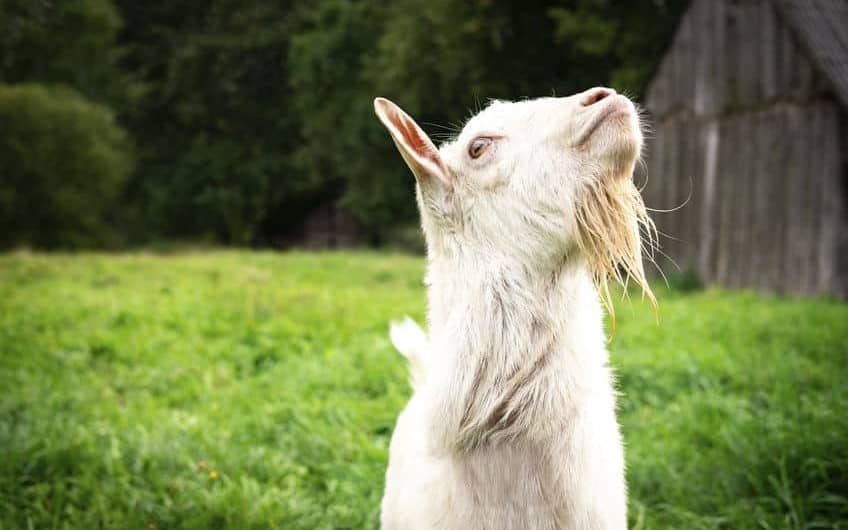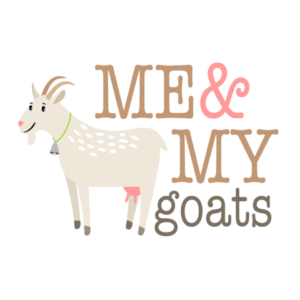
While goats are known for many things because of their strange personalities, there are also some strange things about their physical appearance. Some examples would be their horizontal slit pupils and their distinguishable little beards. So, what is the reason that goats have beards at all?
In truth, no one knows the exact reason why goats have beards at all. Although, there are many different and valid, theories based on years of research and observation. Some of these include it being used for some extra warmth as well as just being a genetic factor of certain breeds.
Whatever the reason for a goat’s beard, there is much more that goes into it than at first glance. There’s actually an interesting history behind the impact of a goat’s beard in our society, and below you will find more information about this unique physical trait that goats have.
Do All Goats Have It?
Not all goat breeds have beards, and it is more common for wild goats to have them than domesticated goats.
It’s more common for male goats to have beards, including ones that are longer and thicker too. But, surprisingly, female goats can have them! This is not as common of an occurrence but yes, female goats can still grow their own little beards.
Beards are also said to be extremely appealing to female goats, especially during mating season, so males will lick their beards to try and keep them clean and good-looking for their lady friends. This type of physical attraction can be compared to how the bright colors of a duck’s plumage can bring him the attention of a female, or how a peacock will spread his feathers for the same reason- in hopes of attracting a mate.
When researching a specific breed of goat, you should be able to find more information about if they tend to have beards and what they look like. The goat’s genetics will play a part in dictating how thick and long the beard will get.
The Alpine, Rocky Mountain, and Toggenburg goat breeds are three popular breeds known for having beards and for having them appear in both genders.
What Is A Beard’s Purpose?

We don’t really know what the purpose of a goat’s beard is, but there are some likely reasons for them.
While they don’t exactly act as an indicator of gender, the beards can help you distinguish a goat from a sheep, since sheep have no beards.
A goat’s beard can also act as an extra layer of fur to provide the goats with a bit more warmth around their face. A great many breeds of goats are believed to have descended from the Eurasian wild goat, which loved to live in chilly weather and higher altitudes. So over time, it could have been passed down through generations as a key element of survival for colder weather.
Concerning this, it’s also believed to just be a genetic trait, since it’s more common for them to appear in certain breeds; and based on that breed, if it appears in both male and female goats. It can also be a sign of them maturing as well since it doesn’t appear in younger goats at all. Based on some accounts, a female’s beard might only begin to grow after she has given birth for the first time.
Another purpose that’s been discussed is that a beard can be proof of putting energy into a nonessential organ to show how one has the energy and what it takes to do more than just the bare minimum to survive. This is one of the reasons that females may find beards so attractive, as mentioned earlier.
The History Of The Goatee
Did you know that goat beards have had a direct impact on the inspiration of the goatee beard style that’s popular today? That’s probably not too hard to figure out since the name kind of gives it away!
The history of this goes all the way back to Ancient Greece to the god Pan, who is depicted as a satyr (or faun, in Roman terms), a half-man, half-goat that had horns, a goat-like beard, and the legs of a goat as well. He was the god of the wilds, rustic music, shepherds and flocks, and the nature of mountain wilds. If any of you have ever seen Disney’s The Lion, The Witch, and the Wardrobe, just picture Mr. Tumnus.
After Christianity became the dominant religion and took over in Greece during the first few AD centuries, the religion would take many of the so-called “pagan” imagery and myths from the Greek culture and infuse it into their doctrine. The god Pan quickly became mixed up with Satan. Source
This is why Satan is so often shown with a little goatee beard in art from the medieval and Renaissance eras. It could also be the beginning of the history behind where he got his devil horns.
So whether it seems obvious or not, goat beards, and the Greek god who sported the original goatee, had a direct influence on the beard style that has become so popular today.
Other Things To Know

Goats hate to have their beards tugged, so if you plan on cutting your goat’s beard, you will have to hold the beard firmly in one hand while using the scissors in the other. The goat won’t like it so have someone help you if you can. Try and keep them distracted with food or something while you trim it.
Besides just beards, goats can have something called “wattles,” which are a little hair-covered appendage of flesh around their throat area (sometimes even around their face or ears). It’s believed they are remnants of a gland that is no longer needed in the body due to evolution over time.
They aren’t harmful and have no purpose, although they can get caught on things like fences or feeders. Other goats can even chew on them. It is possible to have them removed if you wish. Source
